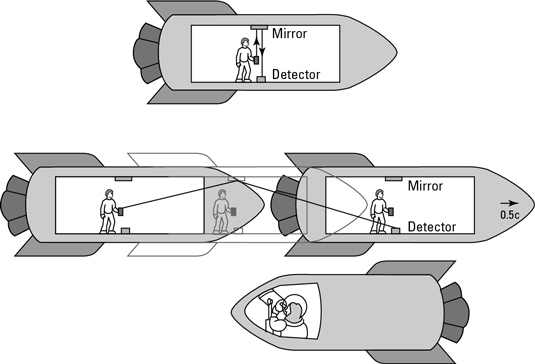The gps on your phone works on a physics formula based on einstein s theory of special relativity more popularly known as e mc2 it pinpoints locations and exchanges data using radio waves for proper gps functionality

The GPS: Unlocking the Secrets of Einstein’s Theory of Relativity

Have you ever wondered how your phone’s GPS technology determines your precise location? It’s fascinating to think that this advancement is rooted in one of the most famous equations in physics: Einstein’s theory of special relativity and his iconic equation, E=mc². In this article, we will explore how the GPS on your phone utilizes this principle to accurately pinpoint locations and exchange data using radio waves.
The GPS and Einstein’s Theory of Relativity
To understand how the GPS on your phone works, we need to delve into the realm of physics. Albert Einstein’s theory of special relativity, formulated in 1905, revolutionized our comprehension of time and space. It introduced the notion that both time and space are not absolute but rather interwoven in a four-dimensional fabric called spacetime.
The theory also introduced the concept of time dilation, which suggests that time moves at different rates depending on the relative motion of an observer. This means that time runs slower for objects in motion compared to those at rest. Although it may seem counterintuitive, this phenomenon has profound implications for the GPS system.
Time Dilation and GPS Accuracy

The GPS on your phone consists of a network of satellites orbiting the Earth. By sending and receiving signals, these satellites allow your phone to determine your precise location. However, the theory of relativity plays a critical role in ensuring the accuracy of your GPS readings.
Due to the high speed at which the satellites move and the gravitational force acting upon them, time runs slightly slower for them compared to an observer on the Earth’s surface. This time dilation effect, predicted by Einstein’s theory, results in a time difference of approximately 38 microseconds per day between the satellites and the Earth’s surface.
While this discrepancy may seem insignificant, it would lead to a positioning error of about 10 kilometers if not accounted for. Therefore, scientists and engineers have incorporated these relativistic effects into the GPS system to ensure its accuracy. The clock rates of the satellites are adjusted accordingly so that they match the time experienced on the Earth’s surface.
Radio Waves: The Language of GPS
To exchange data and determine precise locations, the GPS system relies on radio waves. These electromagnetic waves, similar to the ones used for communication and broadcasting, allow the satellites to transmit their signals to your phone.
Each satellite sends two signals: the first contains timing information, while the second includes the position of the satellite. By measuring the time it takes for these signals to reach your phone, your GPS receiver can calculate your distance from each satellite. Combining this information from multiple satellites, your phone can triangulate your precise location.
The Power of GPS: From Navigation to Everyday Applications
The GPS technology on your phone not only revolutionized navigation but also opened doors to countless applications. From finding the fastest route during rush hour to locating nearby restaurants, the uses of GPS have become integral to our daily lives.
Thanks to the utilization of Einstein’s theory of special relativity, our phones can accurately determine our positions and provide us with valuable information. Understanding the underlying physics behind the GPS system reveals just how profound the impact of scientific theories can be on our technological advancements.
Source:
Related Posts
Quick Links
Legal Stuff

